Artist Interviews 2022
objet A.D 
By Laura Siebold
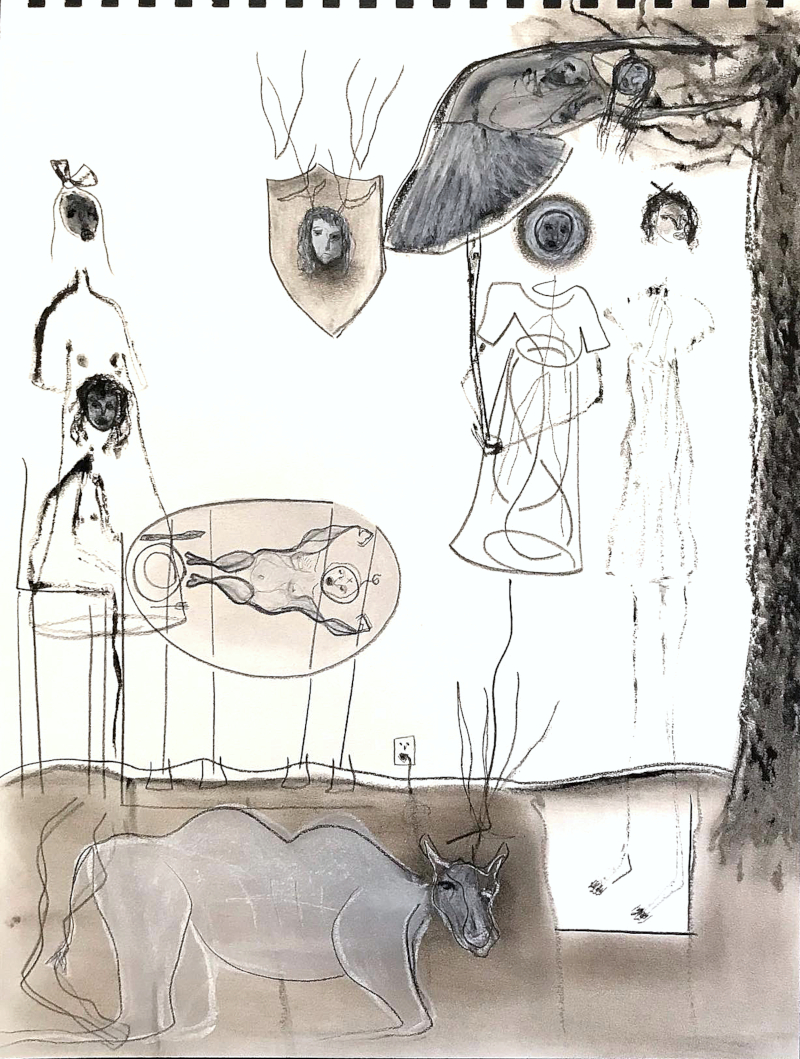
The duo behind objet A.D, Zach Baker and Emily Reisig, excel in their approach of making the viewer relate to rather than identify with their art. Their art is positioned “at the edges” of a visual encounter, starting with the ‘name’. Their artist ‘name” objet A.D becomes a “relational object”, a play on the phonemic level of that “name” and its translation into a double split. In the interview, objet A.D reveal more details about the history of their ‘name’ and the artists’ view of it as a “chance encounter”. The seemingly complex duality of meanings represented by objet A.D becomes apparent in the artists’ approach to space between themselves, the object, and the observers.
In their interview, we learn more about the “figural, spatial, temporal, and social attributes or amplitudes” of their work, as well as their use of dimensions and transformations of bodily representation in space through art. It is “the undecidability of where one begins and the other ends, and the impossibility that anyone is found anywhere but besides themselves” that is at the core of Zach and Emily’s work.
Read on to get a deeper insight into objet A.D’s multiplicity of ideas concerning art, the human body and its figuration, and suggested ways to view their creations. It is safe to say that objet A.D will challenge and transcend your ordinary understanding of art.
Please also check out the gallery Reisig and Taylor Contemporary, which represents both objet A.D’s, as well as Reisig and Taylor’s work. Artists Reisig and Taylor are also featured in this issue.
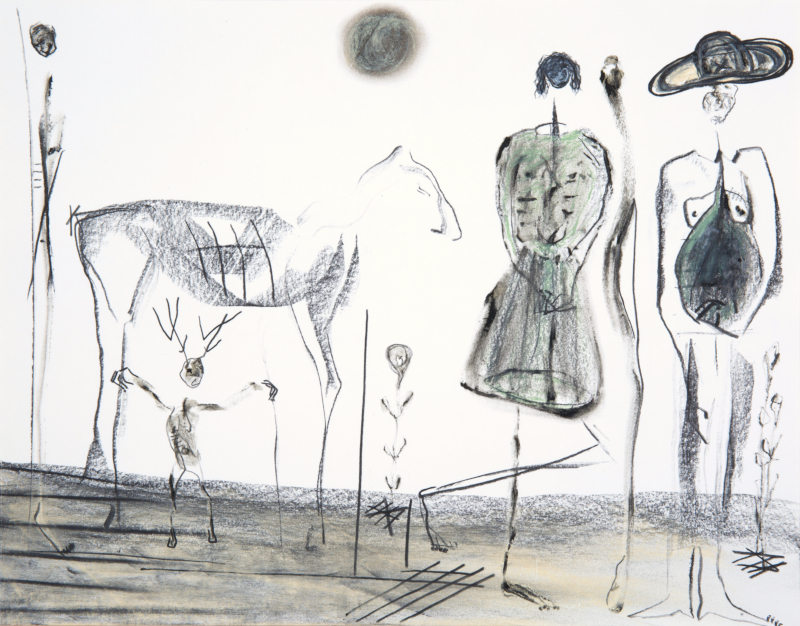
Zach and Emily, you founded objet A.D aka object 80 – what inspired the name of your brand and gallery?
This name is really nothing more than a placeholder or timestamp intended to mark our collaborative work. It does not readily lend itself to reading, writing, saying, or identifying (all the usual signatures of a “name”)—but this is why we use it. In other words, we use a name that breaks-down in the ordinary acts of naming in hopes of elaborating a preliminary encounter with the letter which is more visual than literary, and which is as littoral as it is literal. We always want our work to begin at the edges.
By beginning at the border or boundary of a name, we introduce ourselves at the limits of an address and ask others to arrive at that place through a relation—an encounter—instead of an identification. At times, we write this relation as a kind of formula or algebraic equation: [E + Z = objet A.D / Object 80 (LXXX)]. Though this way of writing our name may seem stylized or ornamental, it is an attempt to exhaust the literal possibilities of a name as a relational object realized in a chance encounter. More specifically, this quotienting of the name “objet A.D” is performed through the relations of a homophony—pronounced in English, “Object 80” sounds like “objet A.D,” and the Roman numeral “LXXX” (‘80’) reads-like “80” (‘eighty’) or “A.D” (‘aydee’). Operating at this phonemic level of a name, at the level of a chance encounter between distinctive traits, we effectively double the split between ourselves in the splitting of our name.
—At the same time, despite our insistence on our name’s resistance to the habits of language, we nevertheless recognize that a name always has a history or narrative associated with it (if only by the historical/hereditary basis on which a name is initially given or assigned). In the case of “objet A.D,” the story is that this name was originally a label written on a drawer filled with unusual (and only partially formed) objects in the workshop of Zach’s grandfather. His grandfather was nearly illiterate and utilized an idiosyncratic writing between English and his mother-tongue, French. Zach was always fascinated by the contents of this drawer, as well as the mysterious writing of the label that harbored the seemingly stranded objects. So, in this narrative, the name is a container, a cover, and a cipher.
However, regardless of what we have to say on the topic, we recognize the fact that what we want from our name has very little to do with how others will be affected by it. This is precisely why we sustain our name as the threshold of a chance encounter.

What defines your art and what is the best way for the viewer to fully experience it?
As a couple collaborating on all of our work, what most immediately defines our relation to the art we produce is our relation to one another. As for the question of what defines our art as such, our response reiterates the structure of this relation to the extent that our work is defined by the loss (and recovery) of oneself in the place of the other, between one another. This is a facet of how our work might be experienced by a viewer, and it is also a dynamic of our manner of working with an object. Through the blurring of realities realized upon entering one another’s work as outsiders or strangers (while nonetheless participating in the other’s reality as if it were one’s own), we wind our lines, figures, and forms around the voids that hold the place between oneself and one another, in the interval between the making of one another’s marks (and between object and observer). This betweenness, this interstitiality of the artwork, defines our work (at least as it is defined by/for us).
Of course, this only partially defines our work in terms of our intrinsic process or practice, and not necessarily in terms of its presentation to an observer. Rather, considered extrinsically, embedded in its place between the object and the observer, this work with an in-between may be found as a fractal structure persisting on every level, and in every dimension, of our work. Between the tessellated transitions from the intrinsic to the extrinsic, from the local to the universal, is where the viewer is positioned. Regarded in this way, it is possible to recognize the recurrence of an interstice—a “neither here nor there”—across the figural, spatial, temporal, and social attributes or amplitudes of our work. For example, the lines of our figures find and incise the cut(s) between a body in each phase of its movements, mannerisms, or transformations as it passes through different dimensions of any scene encountered. But this “body” also refers to the object itself when we maintain the perforations on a piece of a paper, the work-marks of the clay in a bronze sculpture, or some other residue signaling where a part is cut-off to produce the (w)hole. These are material echoes of the figural phenomena and social observational acts of the artwork. As cuts on a surface or along an object, each line contains a body in its concentric components as much as it dissolves its limits in the surrounding space. The lines of a figure pleat the folded place of the projective space; the seam of a body becomes a final frontier—an event horizon.
Along these lines, we rarely present lone figures and often populate desolate or dreamlike scenes with tangled forms, suggesting the multiplicity of any individual, the undecidability of where one begins and the other ends, and the impossibility that anyone is found anywhere but besides themselves (in the lost part of their (w)hole). If one looks to the scenes in our surface works, this betweenness may become evident in the impossibility of deciding whether it is day or night, inside or outside, remembered, or reimagined. With our sculptures, a similar strain of undecidability emerges as it is impossible to say whether the figure is rising or falling, waking or sleeping, waxing or waning…. In any case, we keep track of the interstices by sustaining a drift between our lines, which are always at least doubled against themselves, never resting in place. Perhaps this endless writhing is what defines our work.
—For observers, our work is best viewed as anything but a photograph. (No doubt, this presents some difficulty with the (digital) photograph being the ordinary envoy for any particular artwork entering public view these days—but we accept this unavoidable dissonance.) The shifting scale and subtle dimensionality of our work asks for a certain amount of privacy when viewing it, as if one were voyeuristically looking into someone else’s dream. But we also want our work to be viewed with others surrounding the observer(s) in order to extend this voyeuristic instant beyond the piece and into the space of observation itself. Basically, we want someone to be viewed while viewing our work (but nobody is ever really alone, anyway…).
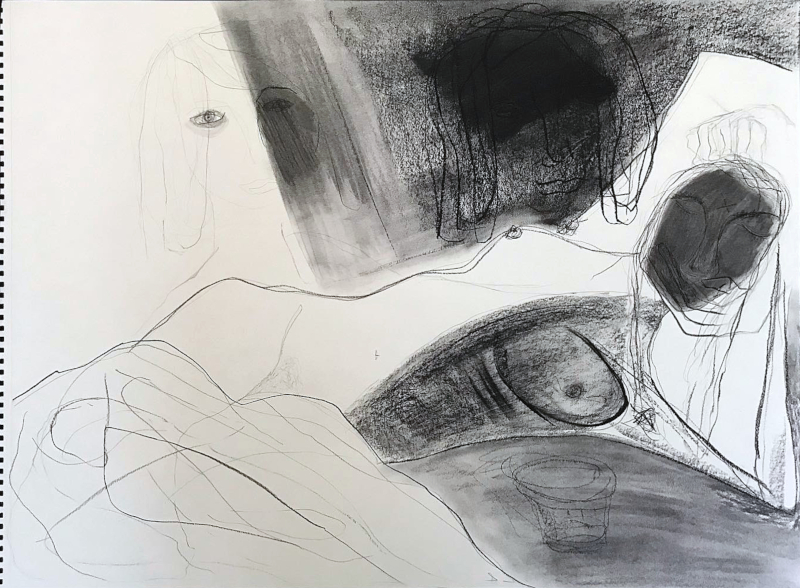
What started your fascination for the human body and your intention to center your work around it?
Our fascination with the human body begins with the question of what makes a body human (or not). In effect, we are probably more intrigued by the starts and stops of a body, by the phases of its figurations; which is to say, we are wondering when a body stops being human, and when it starts being something else. For us, the question of the human body is an opening into the life and death of a line or trait, a question of the distinction between limits and horizons. This is why we say our work falls between the “almost-human” and “all-too-human.” By fractioning its anthropomorphic form, a human body inhabits each articulation of a person, place, or thing—it even inhabits where it has never been (just think of the constellations…).
But we want to avoid the predestination of the monolithic Human Body. This is why our interactions with bodies move toward a sort of sublime ethics, a way of remaining in awe of what a body can endlessly become, and not what it is already destined to be. For this reason, we also find that it is crucial to distinguish the human from the body; that is, to make a distinction between a body and its mode of figuration, the conditions under which it has become visible, legible, or palpable. We also refuse to elide the human, the body, or the human-body under the categories of people or persons. We are working with a body in a minimal way, as a trackable trait or line, following the transformation of this entity through all its contradictory phases of figuration, exposing its axis, accesses, and excesses. Persons become things, humans become animals, people become places. Ultimately or initially, wandering through altered states, we are wondering whether a body as we see it, as we say it, is even there at all.
—On a more biographical note, each of us has a unique history of how we came to be interested in the (human) body. For Emily, her parents (Leeza and Chris) are artists and photographers, and her early life was often spent accompanying her parents on photoshoots. Much of her parents’ work is portraiture, and many of their works include intimate shots and nude bodies. Emily has been steeped in all of this for her entire life, and for her the (human) body has always been a welcoming form, one that harbors an intimate encounter with something or somewhere which is otherwise out of reach. For Zach, he is epileptic, and this situates his concern for the body in all of its errant and uncontrollable forms. He does not consider his body to be entirely his own, and his relationship with the body is therefore of alienation and (dis)possession. We like to think that our personal trajectories find a balance in our shared work with a body across these singularities.
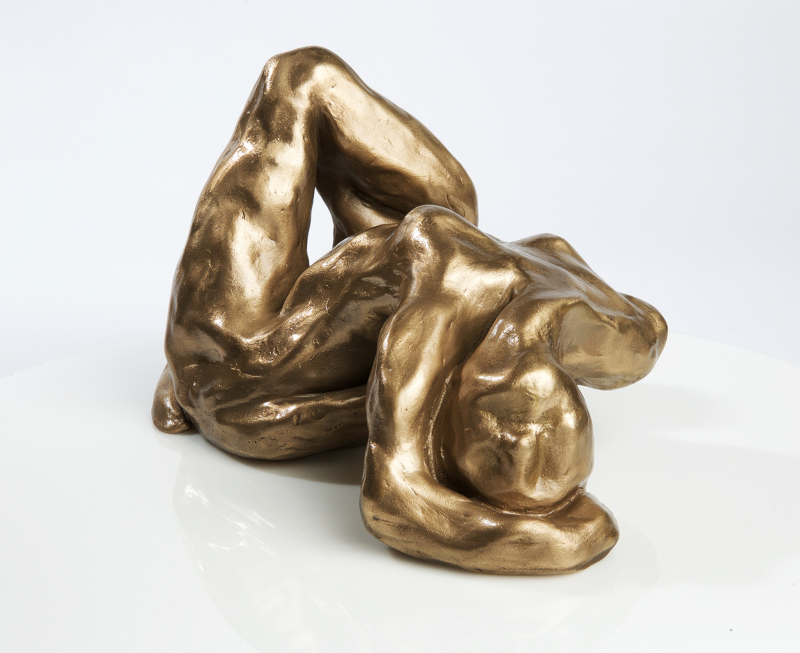
Can you describe the technique you utilize to represent the various marks and (negative) spaces of the body and its position in the exterior space?
We describe our material practice as combining acts of repetition and negation. We occupy this modality in all surfaces and sculptures, threading marks of formal (repeated) techniques through aleatory, frantic, frenetic actions of (negative) bodily events. The repeated/formal aspects include any controlled or refined activities of the artist, while the negative/aleatory aspect refers to the gestural imprints of bodies (in all its accidents and errancies) and the spontaneous events which do not involve the application of material, but rather its manipulation, removal, elongation, or destruction. This includes scratches, scrapes, snarls, and cuts—or anything that involves the negative space between our repeated marks.
On surfaces, we work between the thick and the thin; using primarily our fingers/nails and improvised tools with charcoal, chalk, oil, oil-stick, oil-pastel—and sometimes collage—we paint and draw on all levels of a plane with sgraffito and impasto techniques, simultaneously etching-into and raising-up the space. Dimensions of the surface function like discrete but interconnected anatomical systems of a body, recording the circulatory pulses of our work: strokes, thrusts, drags, points, and burnouts.
With sculpture, we sustain this way of working with a surface through a transitional tissue turning between the (negated) clay in which our object begins and the (repeated) bronze form in which it results. Recovering this sublimated tissue is the primary process of our sculptural work. Through the singular realization of multiple instances of the same object, we build dissimulated bodies that negatively—and repeatedly—turn into, around, and away from themselves (and their observers), endlessly evolving in transition.
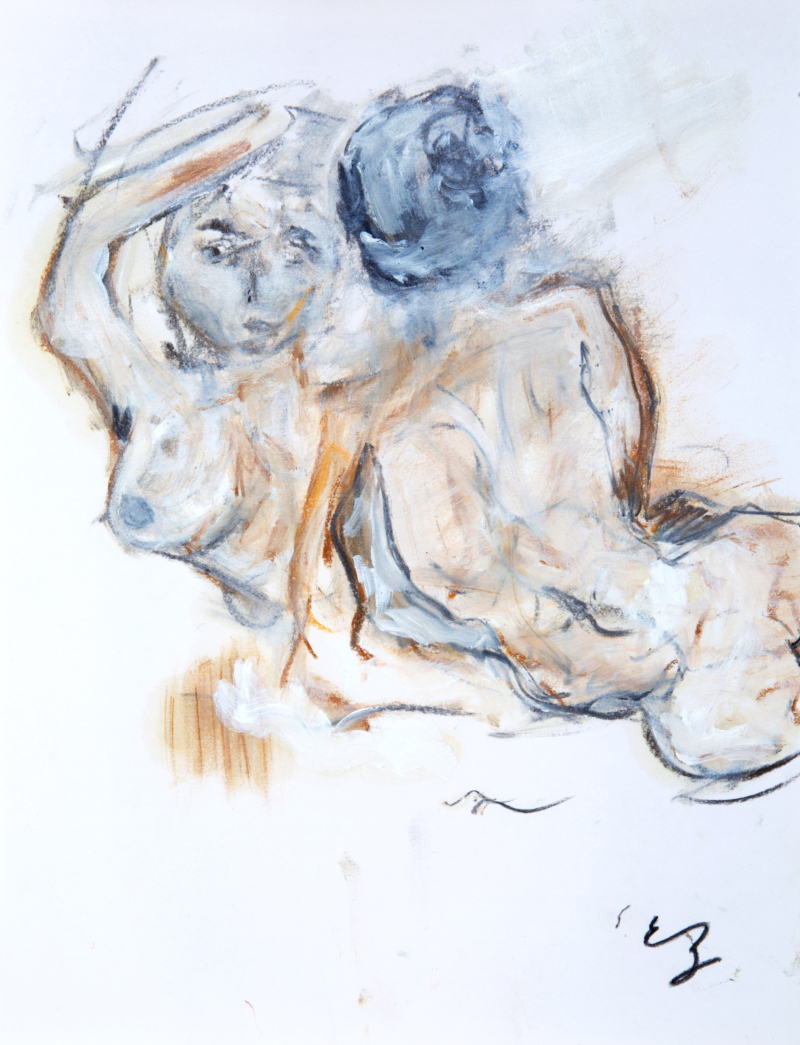
The following statement can be found on your website: “Following the turnings of a trait or line along deserted scenes, disoriented figures, and non-orientable spaces,
our work brings interiors to the exterior, and dorsals to the ventral, through the nodding undecidability of a body’s superpositions rendered in interstitial forms.
By showing the breaks of a body between states—between the almosthuman and the all-too-human—we (dis)articulate the eclipsed temporality of a fragment, form, or figure
in all its repeated permutations and afterlives. Fundamentally, our work encounters the timing of a body as a spatial relation.” - How is the interior of the body represented in your work?
The interior of a body is presented as an(other) exterior. Interiors and exteriors are relative positions treated as separate slivers occurring in the same place and on the same level of the surface (but not necessarily in the same dimension). While showing the ways a body may shift between gestures or positions, we show a disoriented body delimited by the relative positions of its parts: a body between its layers, between its interiors and exteriors (its insides and outsides). Often, our paintings and drawings present figures that appear nude while holding either clothing or fabric (in the process of becoming un/clothed); at other times, it is as if we are applying some sort of x-ray vision, exposing what’s underneath the clothing—and beneath the flesh—of a figure.
Though, for us, the bodies we present are neither nude nor x-rayed—but naked in the most expansive sense. There is nowhere for anybody to hide. This is also true of our sculptural works, where our figures tend to turn and contort until every permutation of a certain posture or pose is eroded or achieved, exposing the phase transition of a form. In each rotation of our sculpture, a different front takes the place of a different back, the dorsal becomes the ventral, until someone arrives at the same place they started (but upside down, and in a different instant). This is why we always consider our works—both 2-dimensional and 3-dimensional—to be non-orientable. There is nowhere for anyone to go. Every return recoils to a new origin.
We do not make a fixed distinction between the insides and outsides of a body, but instead think of every possible path a body may take in the process of becoming (or becoming undone). For us, the (de)limits of a body are not limited to the space of the flesh—a body is also bound by time and its psychic resonances or residues. This includes the temporal elapse of a body: we render figures that are simultaneously old and young, nascent and extinct, brute and elegant… splicing-together the split ends of a sequence of events. We display what would usually be hidden as if it is always already put in plain view. (Take, for example, our repeated use of antlers in serendipitous instances in and around a body. This is a symptom of an inside coming to an outside, of an extremity coming to the head.)
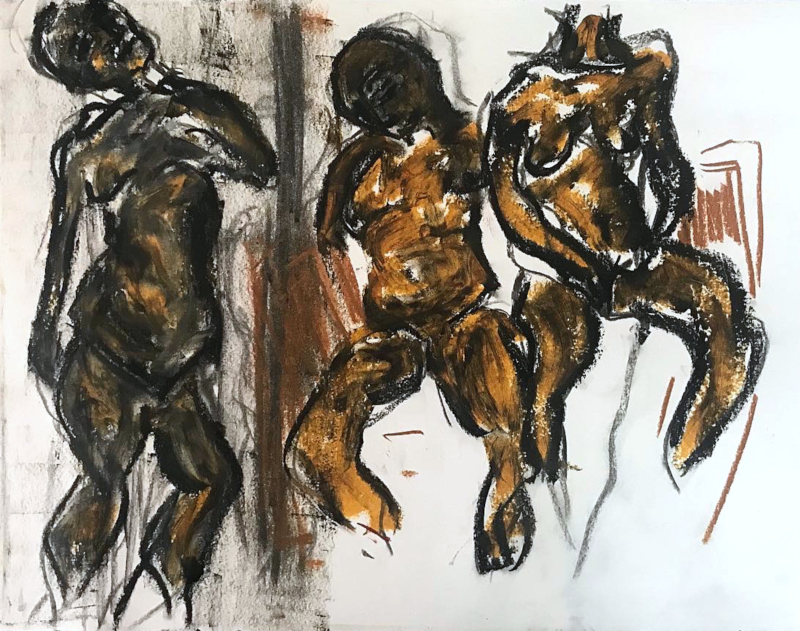
How can “the timing of a body as a spatial relation” be translated into art? How would you describe your place as artists in relation to your art?
A body condenses time like a dream. Our work unfolds the process of this condensation. (And, like a body, a dream is never entirely one’s own—it mysteriously comes from somewhere else (while remaining entirely inside us)…). By working between ourselves, we end-up elsewhere and otherwise in the process of making: we produce the artwork as a sequence or series of events (without a particular direction). We respond to each other’s tracks as tick-marks in time and eventually accumulate a force of figuration in the place they are collected as a population. We translate our alternating intervals of work—our alternate realities—into a singular image of the time that passed between us—this is the timing of a body as a spatial relation: the record of the transformation that occurs in the chance encounter between bodies—the process of one body coming next to another (and becoming another).
But the timing of the body as a spatial relation pours through the seams of our work in other ways as well. In particular, if we turn to the fine grain of our strokes and marks, it is possible to see a body’s temporality presented as spatial phenomenon in the various transformations an initial mark or stroke may undergo. Sometimes these marks are rubbed away until they appear a distant memory; sometimes a stroke is dragged along a surface until in burns-out; sometimes a line is scratched and divided into segments, transforming an instant into a series or sequence. These are examples of the timing of the body as spatial relation being translated into our work. If we look to fully formed entities, it is possible to see spatial relations of a body’s timing in the ways in which objects and figures often appear to eclipse themselves— each figuration is iterated at least two times. To repeat something said earlier: we see a body as being limited by time as much as flesh.
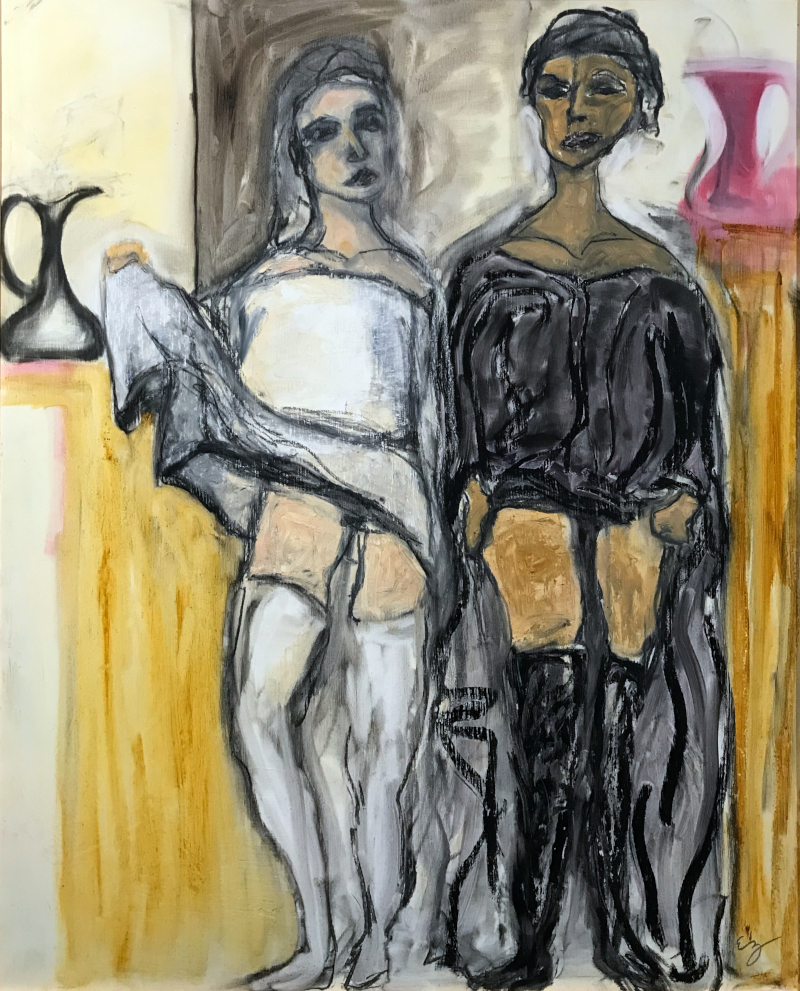
Would you say that your gallery draws inspiration from Leeza’s and Chris’s work, as well, and if yes, in what extent?
Drawing inspiration from Leeza and Chris (and their artwork) is unavoidable. They are a power couple to be reckoned with. They have an incredible ability to work between all types of mediums, genres, and technologies, and this seems to come from their absolute fearlessness when faced with the challenges of doing something in one’s own way alongside—and along with—someone else. They are ruled only by their ever-evolving process. This is, perhaps, where we draw most of our inspiration from their way of working: from their work we have learned to only ever trust in the process itself and to always keep moving—no matter what. (This constant movement even appears to be a major facet of their current lenticular works: these flickering, constantly changing, images seem proportionate to their unsettled movement as artists.) So, we suppose it is their ability move, change, evolve, and adapt that we find most inspirational. They do not worry about anything besides making more art. We follow their lead.
Most recently, and more directly, we are currently working on a collaboration with Leeza and Chris that involves translating one of our works into a lenticular form. We will see where this goes… but, in any case, we find a lot of inspiration in the dynamics of this ongoing collaboration. In fact, even before beginning this collaborative experiment, simply bearing witness to parts of their process allowed questions of dimension, distance, and identity to seep into our work in profound ways.
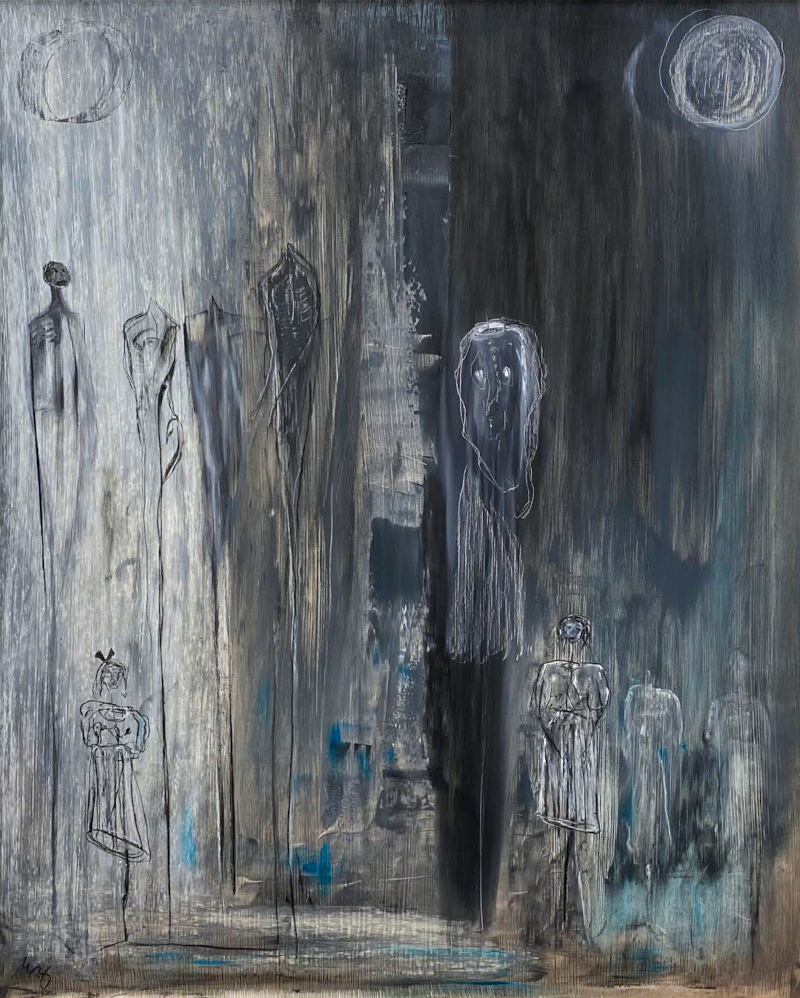
How important is the dual representation of both works by Reisig & Taylor, as well as OBJET A.D in your art gallery Reisig and Taylor Contemporary? What were the reactions of the art world about combining both representations into one gallery?
It can be difficult to find a middle ground between artists working in different mediums or genres. But, as a new gallery presenting contemporary art, Reisig and Taylor Contemporary poses a way to work through this difficulty and construct a place of intersection where there may not immediately appear to be any crossover between artists or their mediums. Initially, by creating a split (dual), but nonetheless synchronized and concurrent, presentation of the different dimensions in which the work of art may take place, the gallery not only gives space to the individuated activities of each of the works and their respective artists, but also opens up a space between different ways of winding around the viewer. The gallery finds the interplay of altered or disjoint dimensionalities to be a fundamental starting point of the contemporary artwork as a mode of art that is always already caught-up in the various entanglements of a world quite literally split between dimensions of surfaces and bodies. Through the gallery, we want to find the knots tied between aesthetically distinct and materially discrete works of art. Reisig and Taylor Contemporary offers the Dual Presentation as a place of convergence between singular trajectories and collective resonances.
Of course, at the same time, there is a visible diversity of unique art forms being realized and presented together at modern and contemporary galleries and institutions throughout the world—so this way is not something the gallery invented, it only recognizes it as the primary task of the contemporary art gallery. It is only by positioning (at least) two radically different ways of working next to one another that one begins to ask important theoretical, ethical, and historical questions about how these objects interact and interrelate. Further, since the gallery is now faced with the question of the work of art in the age of digital reproduction, it is crucial to (re)introduce the analog into the digital, and the digital into the analog. The gallery’s mode of Dual Presentation asks how separate any extremes may actually be. It is in this way that the gallery is working with time as much as space—it is reaching back and moving ahead at the same time. This is why the basic function of the gallery is situated in the linking of the already and the not yet.
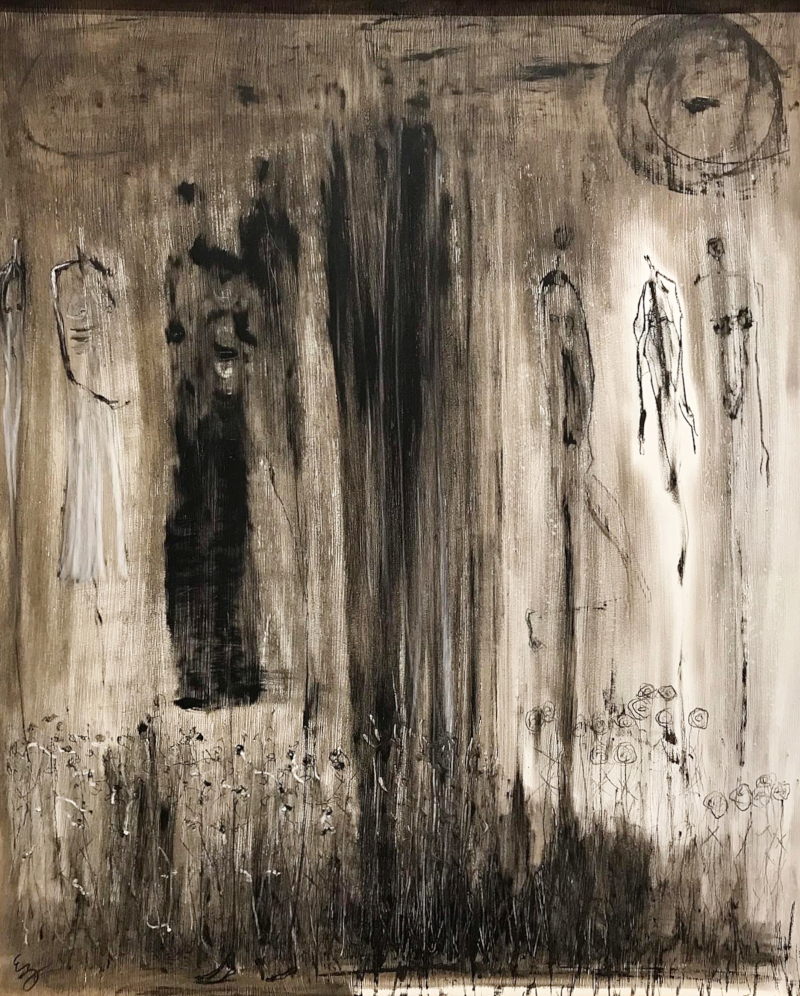
What do you value about collaborations and what has been the most intense collaboration with other artists throughout your career so far?
In terms of producing the same work at the same time, the collaboration between ourselves is the only collaboration either of us has ever even considered undertaking. — Or, at least this was true until we just recently began working collaboratively on a piece with Chris and Leeza. This recent collaboration is certainly the most challenging due to the technical and generic barriers being overcome—but that is precisely what we find most exciting about it.
Previously, neither of us really considered the fact that someone else might take our work seriously until we started working together. Zach destroyed his entire body of work as an individual artist, and he would likely continue to do so if he were not working collaboratively. Otherwise, we are both intensely individual individuals and at a point we really could not imagine collaborating with other artists. (We still aren’t entirely sure we ever agreed to collaborate with one another—it just happened.) Now, we cannot imagine working without collaborating. Collaboration delimits our work in a way that makes sense to us. It opens-up the process to the chance of something else.
What is planned for the future?
We tend not to plan ahead too much. We trust in the present process. We trust one another’s evolution, and this carries our work with a constant momentum of moving toward someone else, something else, somewhere else. We try to achieve everything we want to achieve as soon as we can achieve it—there is never enough time. But as for any anticipatory activities, we are working on some large-scale bronze sculptures, as well as some conceptual structures that will hopefully find an opportunity to be properly articulated. We will be having another exhibition with Reisig and Taylor Contemporary in the Fall, and we will be showing our work with them at the Reno Tahoe International Art Show in September. It is also fair to assume that we will continue to create some more experimental works by collaborating with Leeza and Chris.
|
|

